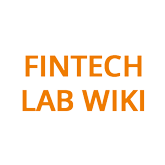Difference between revisions of "Play2Earn"
(Created page with "Play2Earn") |
|||
| Line 1: | Line 1: | ||
| − | Play2Earn | + | written by Dan Dubkovic |
| + | |||
| + | == Introduction == | ||
| + | Play2Earn games have taken the cryptocurrency scene by storm in 2021, with the most notorious title, Axie Infinity<ref>https://axieinfinity.com/</ref>, reaching a token market capitalization close to 10B USD<ref>https://coinmarketcap.com/currencies/axie-infinity/</ref> at peak, compared to 31M USD at the start of the year. These games attracted a lot of attention from investors and speculators, as well as traditional gamers. The ownership over these games is distributed among many holders of governance tokens, but an important role is also played by the utility tokens used inside such games to interact with the game’s internal economy. What is interesting here is how such games attempt to attract capital to sustain such high valuations, while still maintaining a resemblance of a video game we know from the pre-crypto days. | ||
| + | |||
| + | This is what the word “tokenomics” refers to, i.e. the inflationary and deflationary pressures of various game design features, which all play a role in the amount of circulating supply hitting the market and thus, holding outside demand constant, heavily impacting the token prices. An additional level of complexity is introduced to tokenomics with Non-Fungible Tokens (NFT hereafter) traded on marketplaces, as they play a fundamental role inside the game. The term Play2Earn (P2E hereafter) now gets attached to almost every new game launched in the crypto space. It seems like wishful thinking that someone could earn a salary just by playing a video game and it’s obvious that all these games and their economic models are highly experimental[4]. | ||
| + | |||
| + | At its most basic, P2E means a player playing the game to obtain tokens with some value inside the game that they own and have total control over, and that they can sell on the market. Where that value comes from, varies from game to game, but these tokens can generally be turned into NFTs, which are sold, or they are required to play the game in the first place, creating a feedback loop that is fed by new players coming into the game’s ecosystem. This might sound like a pyramid scheme and so far, games are still struggling to make their economies actually sustainable, as will be noticeable later in this analysis. | ||
Revision as of 14:34, 20 August 2022
written by Dan Dubkovic
Introduction
Play2Earn games have taken the cryptocurrency scene by storm in 2021, with the most notorious title, Axie Infinity[1], reaching a token market capitalization close to 10B USD[2] at peak, compared to 31M USD at the start of the year. These games attracted a lot of attention from investors and speculators, as well as traditional gamers. The ownership over these games is distributed among many holders of governance tokens, but an important role is also played by the utility tokens used inside such games to interact with the game’s internal economy. What is interesting here is how such games attempt to attract capital to sustain such high valuations, while still maintaining a resemblance of a video game we know from the pre-crypto days.
This is what the word “tokenomics” refers to, i.e. the inflationary and deflationary pressures of various game design features, which all play a role in the amount of circulating supply hitting the market and thus, holding outside demand constant, heavily impacting the token prices. An additional level of complexity is introduced to tokenomics with Non-Fungible Tokens (NFT hereafter) traded on marketplaces, as they play a fundamental role inside the game. The term Play2Earn (P2E hereafter) now gets attached to almost every new game launched in the crypto space. It seems like wishful thinking that someone could earn a salary just by playing a video game and it’s obvious that all these games and their economic models are highly experimental[4].
At its most basic, P2E means a player playing the game to obtain tokens with some value inside the game that they own and have total control over, and that they can sell on the market. Where that value comes from, varies from game to game, but these tokens can generally be turned into NFTs, which are sold, or they are required to play the game in the first place, creating a feedback loop that is fed by new players coming into the game’s ecosystem. This might sound like a pyramid scheme and so far, games are still struggling to make their economies actually sustainable, as will be noticeable later in this analysis.





